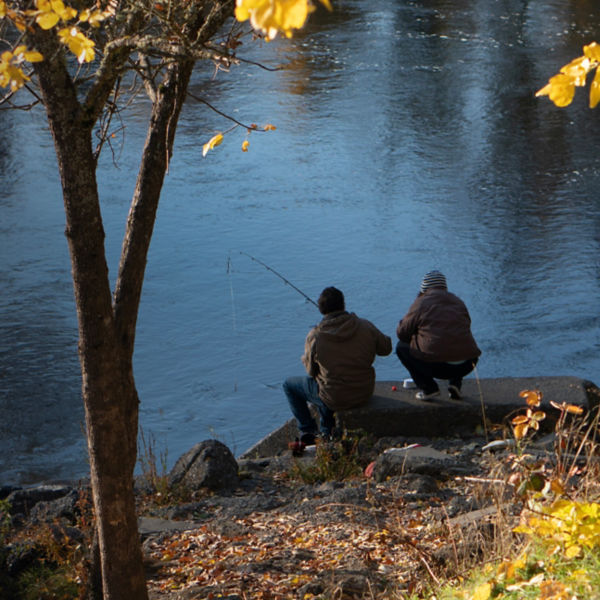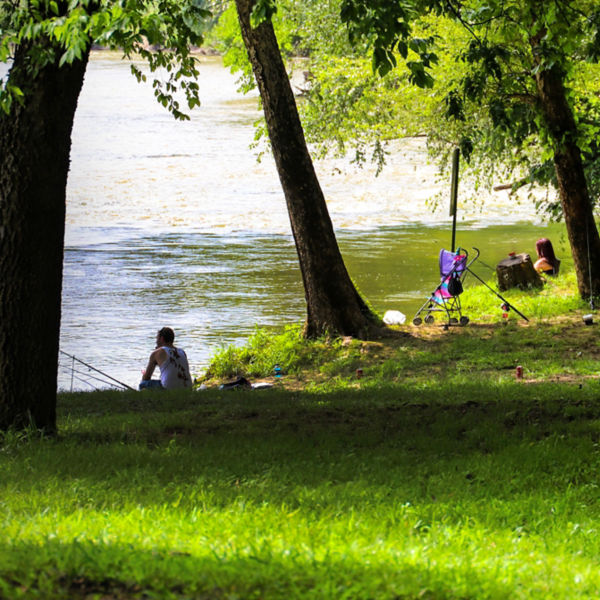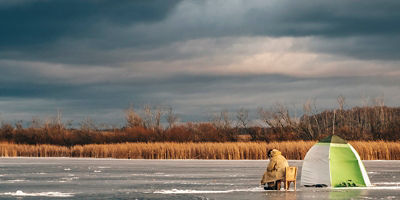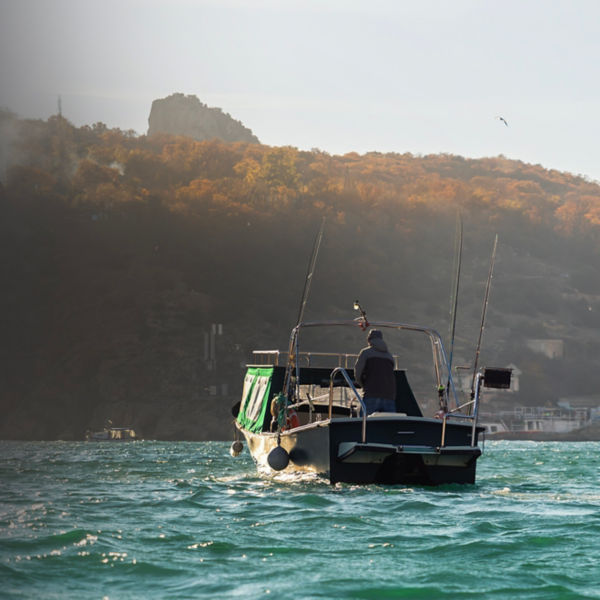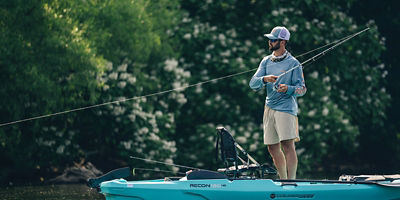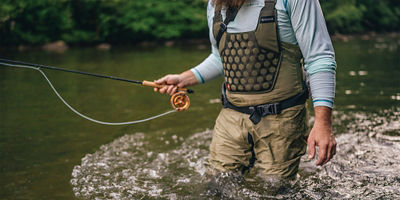
Whether you’re a seasoned angler or someone picking up a rod and reel for the first time, the call of a natural waterway is hard to ignore. Not only are free-flowing rivers, creeks and streams peaceful and picturesque, they can also offer excellent opportunities to catch freshwater fish like bass and trout. And the more that you fish them, the likelier that you’ll be drawn afield, looking farther upriver for fewer crowds and less pressure on the fish. So, as you search for pristine waters (and with them, better chances for fish), you’ll need to pay closer attention to your equipment. The higher the effort to reach the water—whether you’re just headed down a river bank, wading into your favorite creek, or hiking into a remote honeyhole—the more that the right gear can increase your odds for success.
Cover the Basics
Start with the essentials: Pick the appropriate clothing for your freshwater outing. Make sure you’re covered with a synthetic, breathable and quick-drying shirt plus a pair of water-resistant pants. It can be tempting to wear shorts and go shirtless, but the right fishing outerwear (especially if you’re bushwacking to the water) protects you from the elements and keeps you from getting wet and staying wet—and shields you from the sun beating down and reflecting up from the water surface.
Proper footwear will also keep you safe and upright. Pick something that is water-resistant or waterproof when you are fishing from the river bank to keep your feet dry. Also look for shoes with a solid, lugged sole that provides traction on wet rocks and in mud or puddles. To keep your feet comfortable, don’t forget the foundation of performance socks made of merino wool or a synthetic like polyester (no cotton). Finally, if you’ve got a long hike in, pack your fishing footwear (to change into) and consider a pair of lightweight trail runners or hiking shoes for the approach. When you’re done fishing, they’ll provide cold feet a dry respite on the way back out.
Tackle Picks
A few simple outfitting choices can make all the difference.
Setup
Spinning rod-and-reel combos are a solid, versatile option for freshwater fishing. They allow you to use live bait or lures and easily cast into your waterway to use a bobber, cast upstream, jib, or bounce your bait across the river bottom.
Reels
Look for a spinning reel or baitcasting reel that provides easy control and accurate casting. On small creeks or streams less than 10 feet wide, pair this with a 5- or 6-foot-long ultralight rod that will not be complicated to carry to shore and will reduce the casting headaches of getting lines caught in overhanging branches and brush. On wider rivers over 10 feet wide, pair your spinning reel with a 7- to 10-foot-long fiberglass rod that can give you more casting power with less effort—and better ability to reel in the bigger fish that often swim in higher-volume rivers.
Fly specifics
If you’re a fly-fishing angler, look for a lighter-weight setup, like a 3- or 4-weight rod, which often work best on smaller streams. Small flies like nymphs are often good for lower-volume creeks and streams. Remember: Smaller waterways support smaller fish that hunt smaller prey.
Bait and lures
Don’t overlook using simple, live bait like nightcrawlers on a smaller river or creek. These can be especially successful if you bounce them across the riverbed. If you prefer lures, consider a quarter- to an eighth-ounce jig. They’re well suited to slow-moving water or areas near river mouths where they can move about in the water column to catch a fish’s attention.












